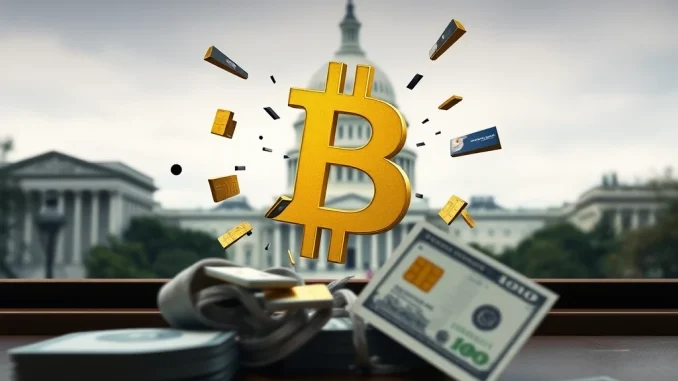
The world of digital assets is constantly evolving, and understanding how key financial figures view components like Stablecoins is crucial for anyone involved in the space. Recently, a notable perspective emerged from within the US Federal Reserve, offering insight into how a top official sees the role of these particular digital assets.
What Did Governor Waller Say About Stablecoins?
According to reports from Walter Bloomberg on X, US Federal Reserve (Fed) Governor Christopher Waller shared his thoughts on stablecoins. His core message? Stablecoins are, at their heart, simply a payment instrument. This might sound straightforward, but in the complex landscape of digital assets and potential regulatory classifications, framing stablecoins purely as a payment tool is a significant statement.
Governor Waller highlighted that this function represents a new way to introduce competition within the existing payments sector. This view positions stablecoins not as speculative assets or complex financial products (though some structures exist), but primarily through their utility in facilitating transactions.
Why Does the US Federal Reserve’s View Matter for Financial Regulation?
The perspective of officials at the US Federal Reserve carries considerable weight, particularly concerning potential Financial Regulation. How regulators and central bankers classify stablecoins directly impacts the rules and oversight they might fall under.
Viewing stablecoins as payment tools suggests that regulatory efforts might focus on aspects relevant to payments systems, such as:
- Consumer protection
- Anti-money laundering (AML) and Know Your Customer (KYC) compliance
- Operational resilience and stability
- Interoperability with existing payment infrastructure
This contrasts with potential classifications that might subject them to securities laws or other frameworks designed for different types of financial instruments. Waller’s statement provides a potential lens through which future US stablecoin regulation could be approached, emphasizing their functional use rather than purely their technological underpinnings or potential for investment.
Stablecoins as Crypto Payments: Boosting Competition?
Governor Waller’s point about stablecoins introducing competition into the payments sector is a key takeaway. Traditional payment systems, while robust, can sometimes be slow, expensive, or lack innovation in certain areas. Crypto Payments, particularly those using stablecoins, offer potential alternatives.
How might stablecoins foster competition?
- Faster Settlements: Transactions on blockchains can often settle much quicker than traditional bank transfers, especially across borders.
- Lower Costs: Transaction fees can potentially be lower, particularly for international payments or micro-transactions.
- Increased Accessibility: Stablecoins can potentially be accessed by individuals and businesses currently underserved by traditional financial institutions.
- Innovation: They can enable new types of payment applications and business models built on programmable money.
By providing these alternatives, stablecoins challenge existing players in the payments market, potentially driving overall efficiency and innovation across the financial system.
The Future of Digital Currency in the US Payments Sector
Governor Waller’s comments contribute to the ongoing conversation about the role of Digital Currency, including stablecoins, in the future of the US payments sector. While central bank digital currencies (CBDCs) are also being explored, stablecoins represent a private-sector led form of digital money that is already in use.
Recognizing stablecoins as payment instruments by a high-ranking Fed official signals an acknowledgment of their current function and potential future impact. This perspective is vital as policymakers grapple with integrating these new technologies into the existing financial framework while managing potential risks related to financial stability, consumer protection, and illicit finance.
The debate surrounding stablecoins and their place in the financial ecosystem is far from over. However, Governor Waller’s clear statement helps frame the discussion around their practical utility as tools for payment and potential drivers of competition.
In Conclusion
US Federal Reserve Governor Christopher Waller’s view that Stablecoins are fundamentally a payment instrument underscores their potential role in enhancing competition within the payments sector. This perspective from the US Federal Reserve is significant for the future direction of Financial Regulation concerning digital assets. As stablecoins continue to evolve and gain adoption as a method for Crypto Payments, understanding their classification and the regulatory approach is crucial for navigating the future of Digital Currency.



